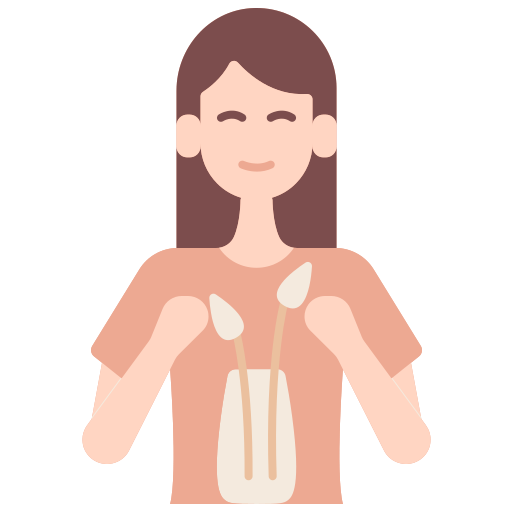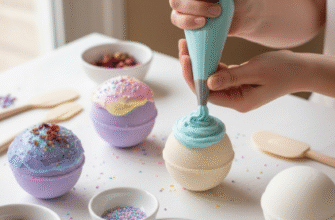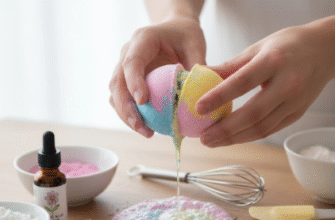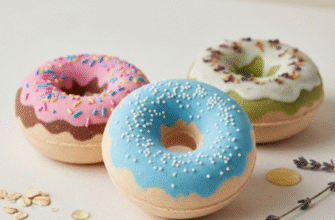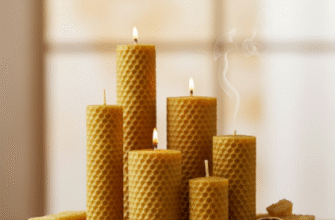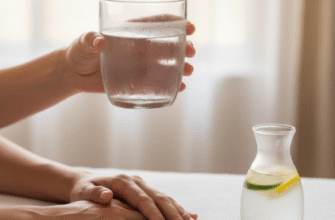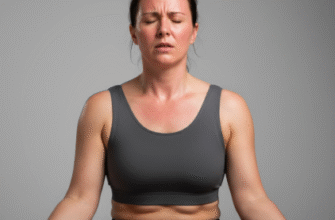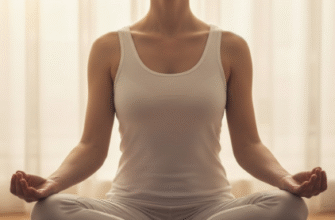That feeling of heavy, puffy feet and ankles after a long day on your feet, a lengthy flight, or just sitting at a desk for hours is all too common. The discomfort can range from a mild annoyance to something that genuinely makes putting on shoes a struggle. While various factors can contribute to this temporary swelling, finding ways to soothe the area and promote comfort can make a world of difference. One simple, accessible approach is self-massage, a gentle way to give your tired lower extremities some much-needed attention.
Taking just a few minutes to massage your own feet and ankles can be surprisingly effective in easing that tight, swollen sensation. It’s not about aggressive manipulation but rather about gentle encouragement and relaxation. Think of it as a mini spa moment you can give yourself whenever needed, helping to unwind both physically and mentally. The simple act of touch can be incredibly calming, signaling to your body that it’s time to relax.
Getting Started: Preparing for Comfort
Before you begin, find a comfortable place where you can sit with your feet easily reachable. You might want to sit on the floor with your legs crossed or bent, on a sofa, or in a chair where you can prop one foot up on the opposite knee or a low stool. Some people find slightly elevating the leg they are working on enhances comfort, but do whatever feels best for you.
Consider using a small amount of lotion, cream, or massage oil. This isn’t strictly necessary, but it can make the massage strokes smoother and more pleasant, reducing friction on the skin. Choose a product you enjoy the scent and feel of – something light and easily absorbed often works well. Warm the lotion or oil slightly by rubbing it between your hands before applying it to your foot and ankle. This small step adds an extra touch of warmth and care.
Take a few deep breaths before you start. Let go of the tension from your day. The goal here is relaxation and gentle relief, so approach it with a calm mindset. There’s no need to rush; allow yourself this time for self-care.
General Principles for Foot and Ankle Massage
The key principle is to be gentle, especially when dealing with swollen areas. Your touch should be firm enough to be effective but never painful. Listen to your body – if something hurts, ease up or avoid that specific spot. Pain is a signal to stop or modify what you’re doing.
Many massage therapists recommend working in the direction of the heart. For feet and ankles, this means generally stroking upwards, from your toes towards your knee. The idea is to gently encourage the movement of fluids away from the area of swelling. While self-massage isn’t a medical treatment for fluid retention, these upward strokes can feel soothing and promote a sense of lightness.
Start with broader, lighter strokes to warm up the area before moving to more specific techniques. Gradually increase pressure if it feels comfortable, but always stay within your tolerance level. Remember, consistency and gentleness are more beneficial than occasional aggressive massage.
Focusing on the Ankles
The ankles often bear the brunt of swelling. Begin by gently applying your chosen lotion or oil around the entire ankle area, including the front, back (around the Achilles tendon), and sides.
Circular Motions: Use your fingertips or thumbs to make slow, deliberate circles around the ankle bones (the bony protrusions on either side). Go both clockwise and counter-clockwise. Apply gentle pressure, imagining you are softly tracing the shape of the bones.
Gentle Squeezing: Cup your hand around your ankle. Gently squeeze and release, moving your hand slowly up from the ankle towards the calf muscle. This should feel like a soft pumping action, not a tight grip. Repeat this several times.
Upward Strokes: Place both hands around your ankle, with thumbs potentially meeting at the front or back. Glide your hands firmly but gently upwards towards your calf. Imagine you are smoothing the area upwards. Repeat this motion several times, covering the entire circumference of the lower leg just above the ankle.
Achilles Tendon Rub: Use your thumb and forefinger to gently pinch and rub the area along the Achilles tendon, the thick cord running up the back of your ankle from your heel. Use small, circular motions or gentle up-and-down strokes along its length.
Soothing the Feet
Your feet carry you all day; they deserve some dedicated attention too, especially when feeling puffy.
Overall Foot Strokes: Start by stroking the entire foot, top and bottom. Use the palms of your hands to make long, gliding strokes from your toes towards your ankle on the top of the foot, and from the ball of the foot towards the heel on the sole. Repeat several times to warm up the tissues.
Thumb Circles on the Sole: Support your foot with one hand. Use the thumb of your other hand to make small, firm circles all over the sole. Pay attention to the arch, the ball of the foot just below the toes, and the heel pad. Adjust the pressure based on what feels good – some areas might be more tender than others.
Arch Support Rub: Use your thumbs to press and glide along the arch of your foot, moving from the heel towards the ball of the foot. You can also use your knuckles, gently curled, to apply broader pressure along the arch if that feels more comfortable.
Toe Attention: Don’t forget your toes! Gently pull each toe straight out, giving it a slight wiggle. Then, hold the base of each toe between your thumb and forefinger and make small circles. Massage the top and bottom of each toe individually.
Inter-Toe Massage: Gently use your index finger or thumb to massage the spaces between the tendons on the top of your foot, stroking from the base of the toes back towards the ankle.
Knuckle Glide (Optional): Make a loose fist and use your knuckles to gently glide along the sole of your foot from heel to toes. This can provide a deeper sensation than thumb pressure alone, particularly helpful for tired arches.
Finishing Touches and Considerations
After you’ve worked on specific areas, finish with some gentle, integrating strokes. Use long, light glides up the entire foot and ankle towards the knee. This helps to soothe the area after the more focused work and enhances the overall feeling of relaxation.
You might also incorporate some gentle movements. Slowly rotate your ankle in circles, first clockwise, then counter-clockwise. Flex your foot, pointing your toes up towards your shin, then point them down away from you. Repeat these movements a few times, keeping them slow and controlled.
How often should you do this? Listen to your body. If your feet and ankles feel swollen and tired, a 5-10 minute massage per foot can be beneficial. You can do it daily, especially at the end of the day, or just whenever you feel the need for some relief. Consistency can sometimes yield better results for ongoing mild puffiness related to lifestyle factors.
Important Note: This self-massage guidance is intended for temporary relief from mild foot and ankle swelling often associated with factors like prolonged standing, sitting, heat, or travel. It is not a substitute for professional medical advice or treatment. If you experience sudden, severe, painful, or persistent swelling, especially if it’s only in one leg or accompanied by other symptoms like shortness of breath or skin changes, please consult a healthcare professional promptly to rule out underlying medical conditions.
Remember that managing temporary swelling often involves a combination of approaches. Alongside self-massage, consider elevating your feet when resting, staying hydrated, moving around regularly if you sit or stand for long periods, and wearing comfortable, non-restrictive footwear. These simple lifestyle adjustments can complement the soothing effects of massage.
Ultimately, self-massage for swollen feet and ankles is a wonderful act of self-care. It’s a chance to connect with your body, ease discomfort, and promote relaxation without needing special equipment or appointments. By incorporating these gentle techniques into your routine when needed, you can help your feet and ankles feel lighter, more comfortable, and ready to carry you through another day.
